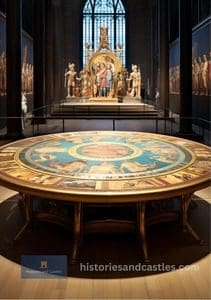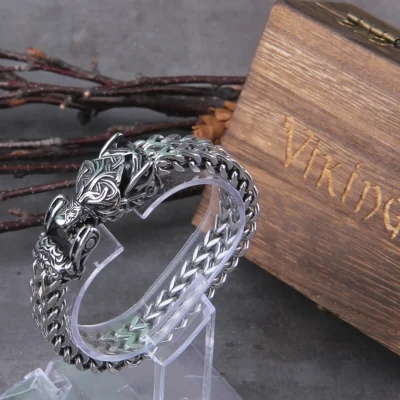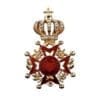Windsor Castle, one of the oldest and largest occupied castles in the world, stands as a symbol of British royalty and history. Set in the scenic county of Berkshire, its towering presence has witnessed centuries of monarchy, political intrigues, and cultural evolution. Yet, beneath its historical grandeur lies a narrative intertwined with the myth and legend of King Arthur, a figure whose name resonates with chivalry, knights, and the quest for the Holy Grail. This article explores the fascinating relationship between Windsor Castle and the legend of King Arthur, exploring their historical connections, symbolic meanings, and cultural significance.
A Brief History of Windsor Castle
Founded in the 11th century by William the Conqueror, Windsor Castle’s strategic location near the River Thames and the edge of a Saxon hunting ground made it an ideal defensive and residential site. Initially built as a motte-and-bailey fortress, the castle underwent significant transformations over the centuries. Kings and queens, from Henry II to Queen Victoria, have each left their architectural and cultural imprints on Windsor, evolving it into the majestic structure we see today.
The castle has served various functions: a royal residence, a military stronghold, and a symbol of royal authority. During the English Civil War, it was used as a headquarters for Parliamentary forces and later became a prison for King Charles I. In more recent history, Windsor Castle played a critical role during World War II, serving as a safe haven for the British royal family from the Blitz.
Today, Windsor Castle remains an active royal residence and is a favoured weekend retreat for Queen Elizabeth II, reflecting its enduring legacy as a symbol of British continuity and tradition. With its State Apartments, St. George’s Chapel, and extensive grounds, Windsor Castle not only attracts tourists from around the globe but also serves as a venue for state banquets, official visits, and royal weddings.
The Legend of King Arthur

The legend of King Arthur is one of the most enduring and captivating narratives in British folklore. Although the historical existence of Arthur is debated, his story has been immortalised in literature, from Geoffrey of Monmouth’s “Historia Regum Britanniae” to Sir Thomas Malory’s “Le Morte d’Arthur.” King Arthur is depicted as the once and future king, a hero who led the Britons in their battles against Saxon invaders in the early Middle Ages.
Arthur’s legend is steeped in the themes of chivalry, honour, and the quest for justice. His famed Knights of the Round Table, including Sir Lancelot, Sir Gawain, and Sir Galahad, represent the epitome of knighthood, bound by a code of valour and loyalty
Central to Arthurian legend are the magical sword Excalibur, bestowed upon Arthur by the Lady of the Lake, and the mystical isle of Avalon, where Arthur is said to rest, awaiting his return to save Britain in its hour of need.
While primarily a figure of myth, King Arthur has become synonymous with British cultural identity. His legend has been adapted in countless forms, including poetry, novels, films, and even modern-day television series, attesting to its timeless appeal and relevance.
Connecting Windsor Castle with King Arthur
Though there is no direct historical evidence linking Windsor Castle with King Arthur, the association is rooted in cultural symbolism and literary imagination. The connection between the two emerges through the ideals of knighthood, chivalric orders, and the enduring allure of the Arthurian mythos.
The Order of the Garter
One of the most tangible links between Windsor Castle and the legend of King Arthur is the Order of the Garter. Founded by King Edward III in 1348, the Order of the Garter is the oldest and most prestigious order of chivalry in Britain. Edward III, inspired by Arthurian legends, sought to recreate the fellowship and ideals of the Round Table with this order. St. George, the patron saint of England, became its figurehead, further linking the order to themes of knightly virtue and protection of the realm.
Windsor Castle, with its St. George’s Chapel, serves as the spiritual home of the Order of the Garter. Each year, the castle hosts the Garter Day procession, where knights, wearing their blue velvet robes and insignia, attend a service in the chapel. The ceremonial pageantry echoes the Arthurian ideals of honour, loyalty, and the enduring spirit of knighthood.
The Round Table and the Garter Throne Room
Windsor Castle’s architecture also reflects the influence of Arthurian symbolism. The Garter Throne Room, designed by Sir Jeffry Wyatville in the early 19th century, showcases a series of heraldic shields representing the knights of the Order of the Garter. These decorations evoke the imagery of the Round Table, with each shield symbolising a knight’s duty to uphold the values of chivalry.
The Round Tower of Windsor Castle, although not directly connected to the Round Table of Arthurian legend, serves as a visual metaphor for the circular structure associated with equality, unity, and the Arthurian court. The tower’s commanding position and round shape evoke the ideal of a centralised authority, akin to Arthur’s leadership, where all knights were seen as equals.

Windsor Castle in Arthurian Literature
The legendary connection between Windsor Castle and King Arthur is not only confined to symbolic representation but also appears in literature. One of the key texts linking Windsor to Arthurian legend is Sir Thomas Malory’s “Le Morte d’Arthur,” which, while not directly referencing Windsor, inspired subsequent interpretations that have merged the two.
Alfred Lord Tennyson, one of Britain’s most celebrated poets, spent time at Windsor Castle during his tenure as Poet Laureate. His seminal work, “Idylls of the King,” a collection of narrative poems, drew heavily on Arthurian legend. The themes of Tennyson’s work resonated with the ideals embodied by the castle and the monarchy it represents. Though Tennyson’s writings do not specifically set Arthur’s court at Windsor, the castle’s presence in the cultural and literary landscape of his time suggests an implicit association.
In modern adaptations of the Arthurian legend, Windsor Castle often finds itself referenced as a symbol of royal power and continuity. The castle’s majestic presence and historical significance offer a backdrop that aligns with the grandeur and mystique of Camelot, Arthur’s legendary court.
Symbolic Resonance and Modern Legacy
The connection between Windsor Castle and King Arthur extends beyond architectural features and literary references. It reflects a deeper cultural and symbolic resonance, highlighting the enduring relevance of both the castle and the Arthurian legend in the collective British consciousness.
The Monarchy and National Identity
Windsor Castle, as a symbol of the British monarchy, represents continuity, stability, and tradition. Similarly, King Arthur’s legend embodies the ideal of a just and noble ruler, fighting for the well-being of his people. Both the castle and Arthur serve as touchstones of British identity, reminding the nation of its rich historical heritage and the values it strives to uphold.
The Appeal of Chivalry
In an age where the concept of chivalry may seem antiquated, Windsor Castle’s association with the Order of the Garter and Arthurian ideals reinforces the timeless appeal of knightly virtues. Honour, loyalty, courage, and justice remain relevant, offering a moral framework that resonates with people across generations.
Tourism and Cultural Preservation
Windsor Castle’s connection to the legend of King Arthur enhances its allure as a tourist destination. Visitors from around the world are drawn to the castle not only for its historical significance but also for the sense of stepping into a realm where myth and reality converge. The preservation of the castle, its traditions, and its association with Arthurian legend ensures that future generations can continue to explore and appreciate this rich cultural tapestry.
A Timeless Union of Myth and History
Windsor Castle and the legend of King Arthur together represent a unique blend of history and myth that defines British cultural identity. While the direct historical links between the two may be tenuous, their symbolic connections are profound. Windsor Castle stands as a testament to the enduring legacy of the British monarchy, while King Arthur’s legend continues to inspire and captivate.
Both the castle and the legend remind us of the timeless ideals of honour, bravery, and the quest for justice. As visitors walk through the hallowed halls of Windsor Castle or read the tales of King Arthur and his knights, they are engaging with a narrative that has shaped the past and will continue to influence the future. The story of Windsor Castle and King Arthur is more than a historical account; it is a celebration of the enduring power of myth and the deep-rooted traditions that define a nation.
By exploring the intertwining of these two iconic symbols, we gain a deeper appreciation of Britain’s rich heritage, where the line between myth and history often blurs, creating a narrative that is both enchanting and inspiring. Windsor Castle and King Arthur are, and will always be, integral parts of the story that makes Britain truly great.








